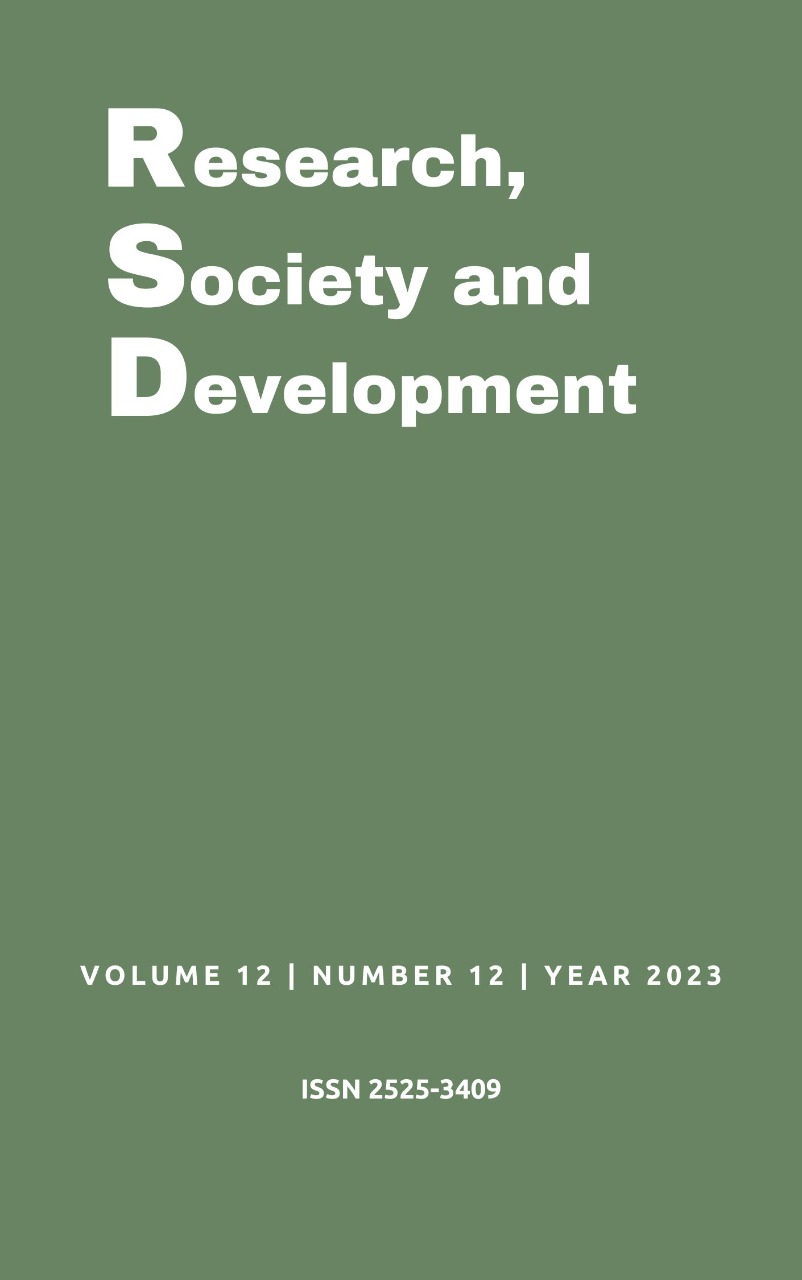Orthognathic surgery to correct deformity in class II patients
DOI:
https://doi.org/10.33448/rsd-v12i12.43815Keywords:
Class II, Orthodontics, Orthognathics.Abstract
The present study aims to present how class II malocclusion is treated through orthognat ic surgery. The treatment of facial deformities requires the combination of orthodontic and orthognathic procedures, in addition to a multidisciplinary team. Class II patients are considered a more complete challenge, as compared to other class types, skeletal recurrence is considered the most common complication of orthognathic surgery. Through a bibliographic study, the understanding was built that orthognathic surgery seeks to normalize the patient's dentofacial morphology, in order to leave the face in a normal shape. It aims to correct congenital or acquired problems that cause disharmony between the maxillary bones and mandible, promoting balance of function (chewing, breathing, speech, swallowing, occlusion) and facial harmony.
References
Almeida, P. (2021). Classe II Subdivisão: Estudo Epidemiológico e Morfométrico (Publication No. 29009980.) [Doctoral dissertation, Universidade de Lisboa (Portugal)]. ProQuest Dissertations. https://www.proquest.com/openview/4bb3bfcf343354331e1457781d62a1af/1?pqorigsite=gscholar&cbl=2026366&diss=y
Angle, E. H., (1899). Classificação de má oclusão. Dental Cosmos. 248-264, 350-357, 262.
Bell, R. B. (2011). Computer Planning and Intraoperative Navigation in Orthognathic Surgery. J. Oral Maxillofac.
Bentes, G. S. B., Oliveira, H. S. L., Martins, K. M., & Pimenta, Y. S. (2021). A influência da cirurgia ortognática no âmbito psicossocial em pacientes com deformidades dentofaciais: Revisão de literatura. Brazilian Journal of Development. 7(11), 108267–77. https://doi.org/10.34117/bjdv7n11-449
Behrents, R. G. (2016). One phase or two, and Buridan’s paradox. Am J Orthod Dentofacial Orthop. 149 (6): 775-6.
Brunharo, I. H. P, Mendes, A. M, Quintão, C. C. A, Fernandes, Á. F. C, & Gravina, M. A. (2006). Classe II esquelética com excesso maxilar: tratamento ortodôntico em duas fases Rev clín ortodon Dental Press. 5(1): 77-82.
Coldebella, C. R. et al. (2009). Indirect cytotoxicity of a 35% hydrogen peroxide bleaching gel on culture odontoblast-like cells. Braz. Dent. J. 20(4), 267-74
Coque, S. (2016). O impacto psicossocial da estética facial em crianças e adolescentes e a possibilidade de intervenções precoces: relato de dois casos clínicos. Rev Assoc Paul Cir Dent. 2016
Coutinho, T. C. L. (2017). Utilização do mini-implante como ancoragem para distalização de molar superior. International Journal of Science Dentistry. 2(46)
Cruz, K. S., Henriques, J. F. C., Dainesi, E. A., & Janson, G. R. P. (2010). Efeitos dos aparelhos funcionais na correção da má oclusão de Classe II. Rev. Dental Press Ortodon. Ortop. Facial, Maringá, 5(4): 43-52.
Fortini, A. et al. (2004). Dentoskeletal effects induced by rapid molar distalization with the first class appliance. Am. J. Orthod. Den-tofacial Orthop., St. Louis, 125(6): 697-704.
Henriques, R. P. (2011). Efeitos dentoesqueléticos do aparelho de protração mandibular (apm) no tratamento da má oclusão de Classe II divisão 1ª. Revista FAIPE, 1(1): 6-28.
Janson G. et al. (2013). Correction of Class II malocclusion with Class II elastics: a systematic review. Am J Orthod Dentofacial Orthop. 143(3): 383-92.
Lopes, M.A.P. et al (2013). O uso de distalizadores para a correção da maloclusão de Classe II. Rev Odontol Univ. Cid. São Paulo, 25(3): 223-32.
Nasrun N, et la. (2021). Procedimento cirúrgicos para corrigir o excesso maxilar vertical: uma revisão. International Journal od Surgery Case Reports.
Pavoni C, Lambardo E. C., Lione R., JR. K. F., JR, J.A.M, Cozza P., & Franchi L. (2017) Treatment timing for functional jaw orthopaedics followed by fixed appliances: a controlled long – term study. European Journal of Orthodontics, 1-7.
Peterson, L. J., & Miloro, M. (2009). Princípios de cirurgia bucomaxilofacial de Peterson. (2a ed.).
Pinheiro, H. P., Bronzi, E. S., & Tuma, C. E. S. N. (2016). Correção de má oclusão de classe II, divisão 2, subdivisão direita, com uso de microparafuso ortodôntico. Ortho Sci., Orthod. sci. pract, 107-114.
Silva, W. et al. (2015). Restabelecimento estético e funcional multidisciplinar/. Fulldent. 6(23): 210-219.
Souza, C., Paulo, C., Luiz, C., & Silvio, O. (2016) Prevalência de maloclusão Classe I, II e III de Angle em um Curso de Especialização em Ortodontia da Cidade de AnápolisSci. Invest Dent, 21(1) 2317-2835. http://dx.doi.org/10.29232/2317-2835.2016v21i1
Torgersbrâten N., Stenvik A., & Espeland L. (2021). Patient satisfaction after orthognathic surgery: a 3 year follow-up of 60 high-angle Class II individuals. European journal of orthodontics, 43(2), 215–221. https://doi.org/10.1093/ejo/cjaa038
Downloads
Published
Issue
Section
License
Copyright (c) 2023 Larissa Martins Sousa; Taysnara Ismaeley de Andrade

This work is licensed under a Creative Commons Attribution 4.0 International License.
Authors who publish with this journal agree to the following terms:
1) Authors retain copyright and grant the journal right of first publication with the work simultaneously licensed under a Creative Commons Attribution License that allows others to share the work with an acknowledgement of the work's authorship and initial publication in this journal.
2) Authors are able to enter into separate, additional contractual arrangements for the non-exclusive distribution of the journal's published version of the work (e.g., post it to an institutional repository or publish it in a book), with an acknowledgement of its initial publication in this journal.
3) Authors are permitted and encouraged to post their work online (e.g., in institutional repositories or on their website) prior to and during the submission process, as it can lead to productive exchanges, as well as earlier and greater citation of published work.


